Abstract
In vitro assays of release of histamine from peritoneal mast cells showed that Wistar rats produced anaphylactic antibody in response to a single immunization with an allogeneic sarcoma. The response occurs early after immunization, and no adjuvant is needed. The thermolability of the anaphylactic antibody suggests that it is IgE.
Full text
PDF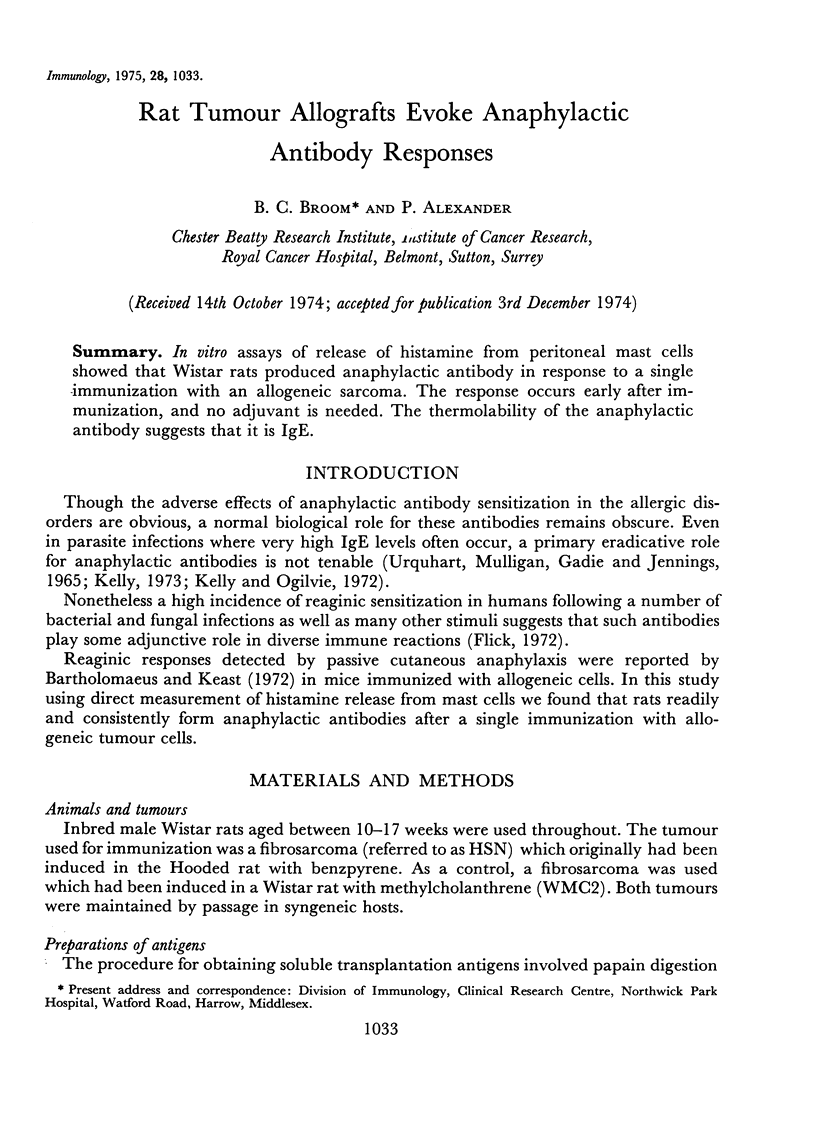
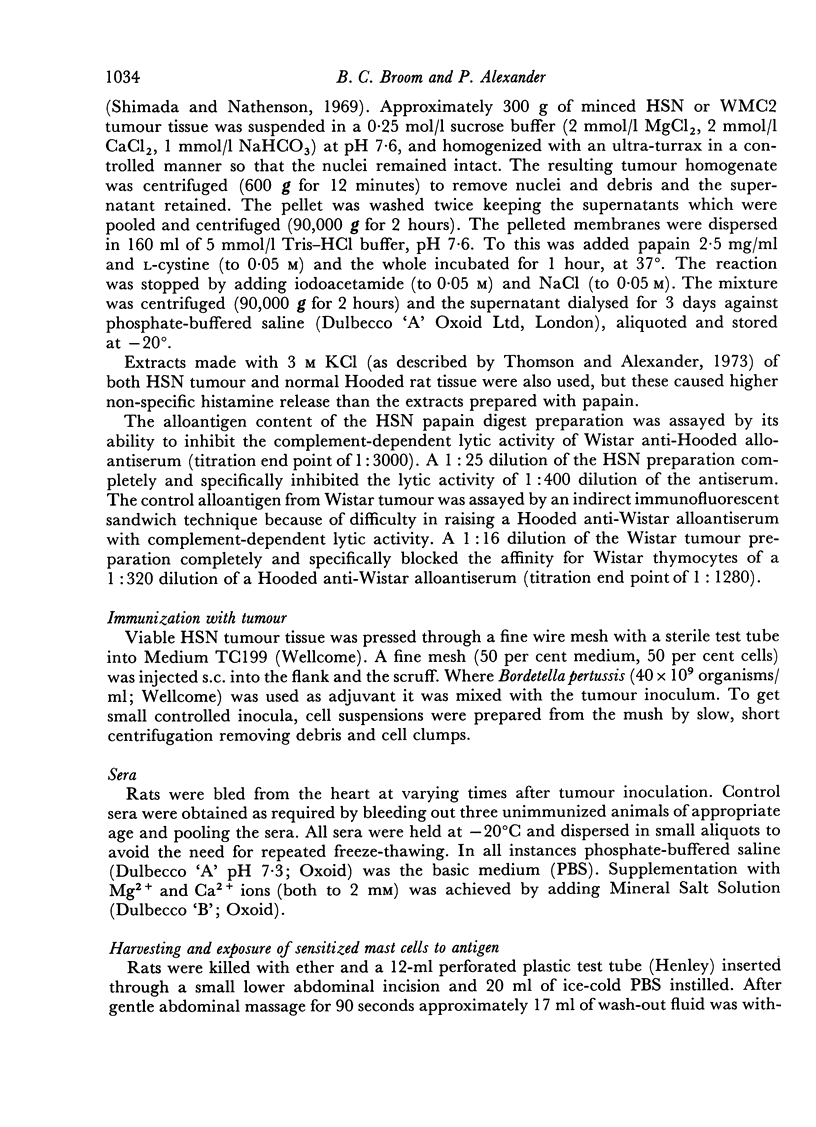
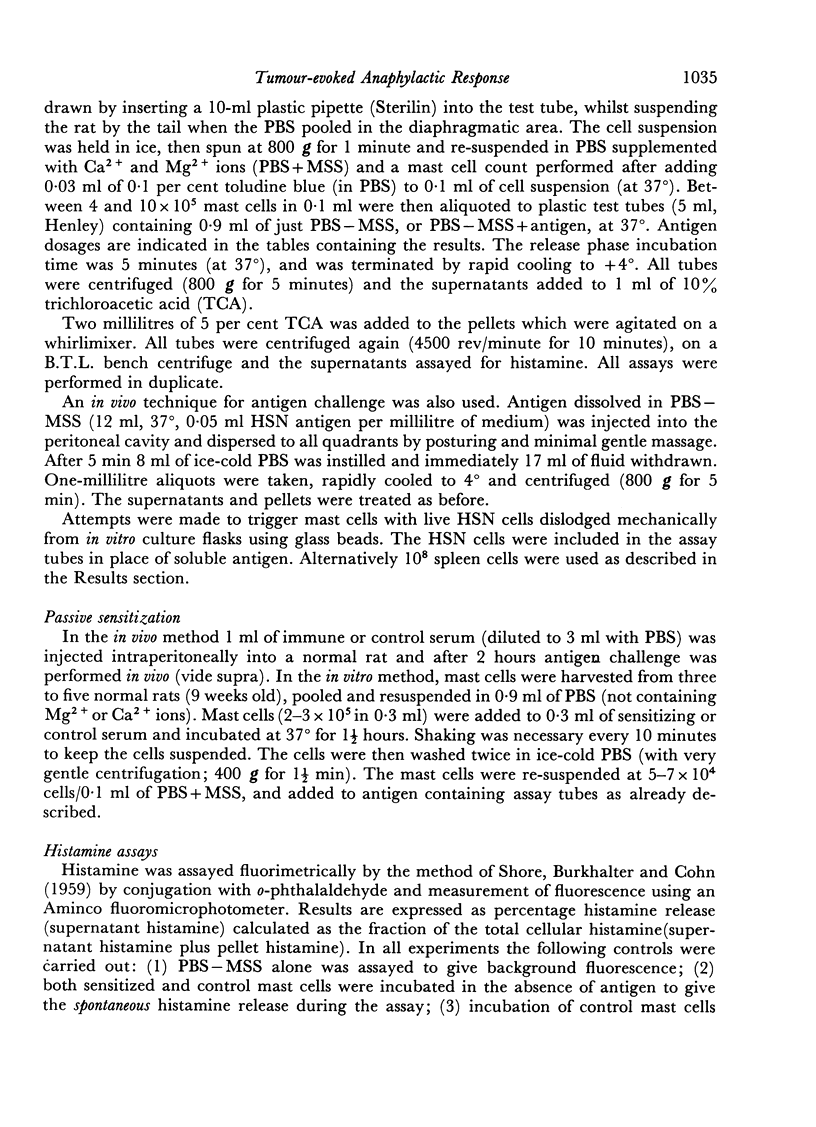
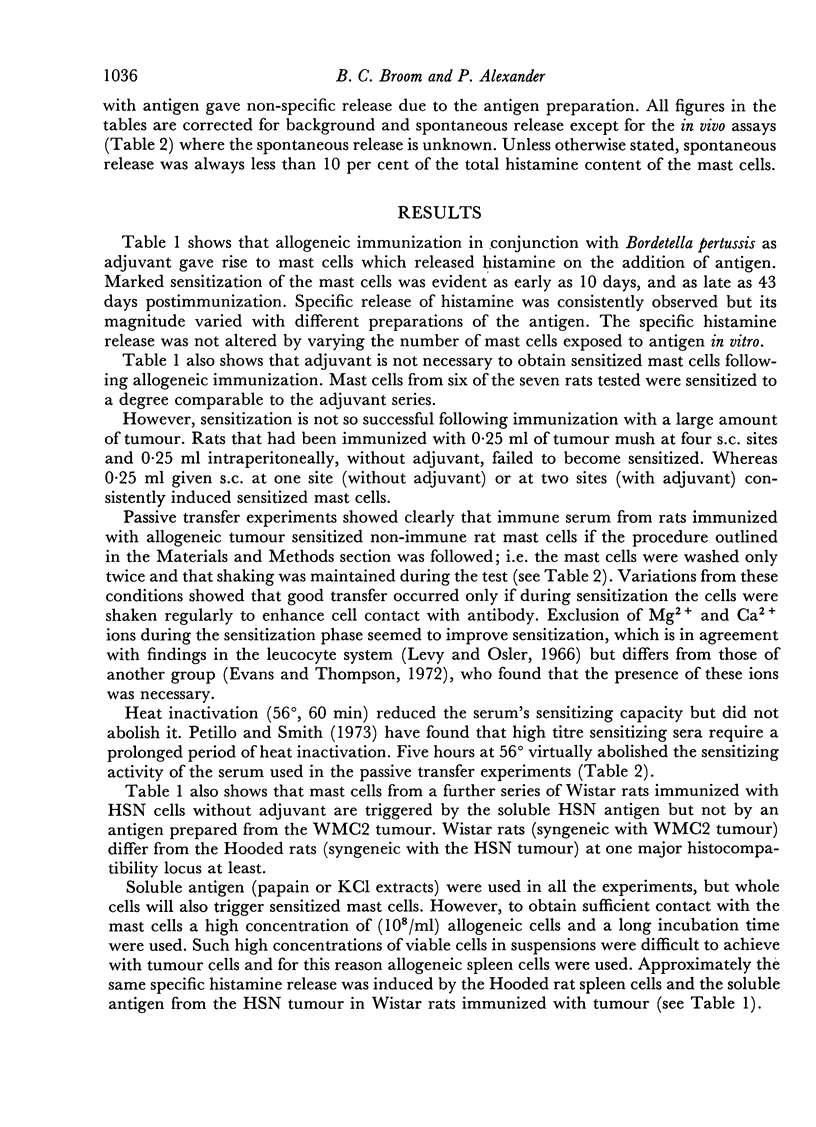
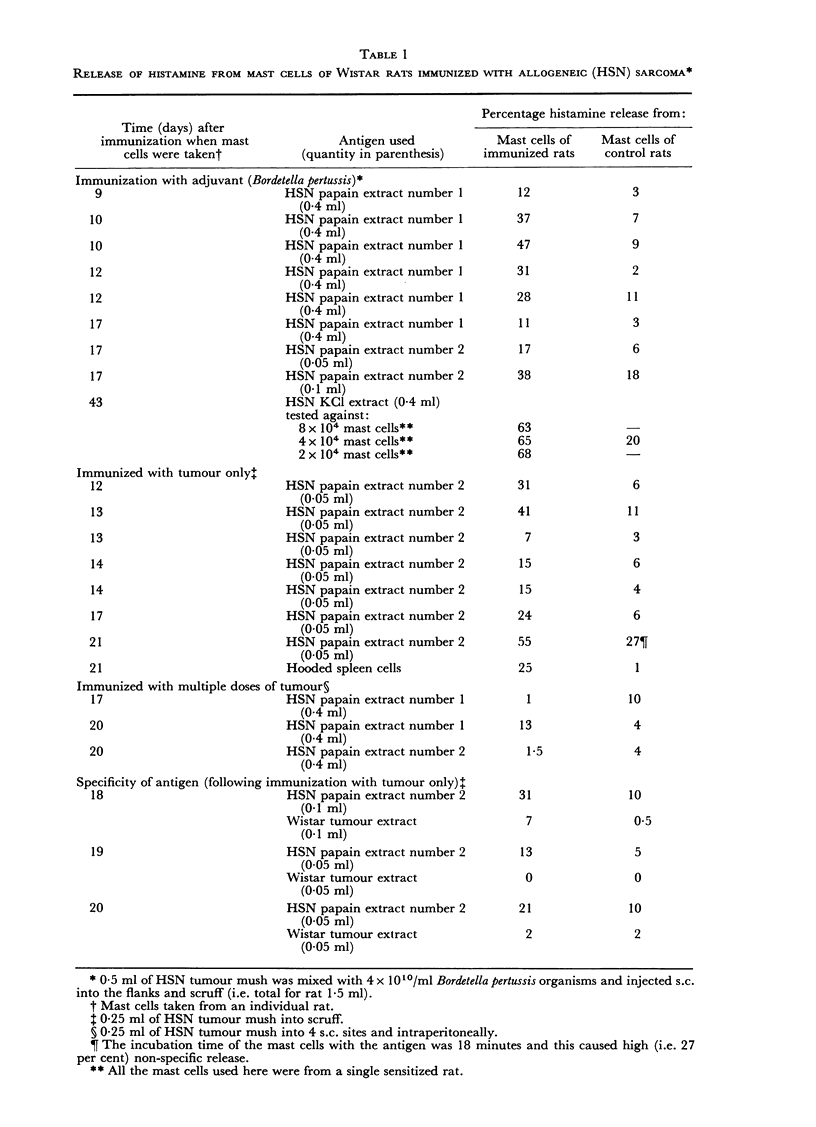
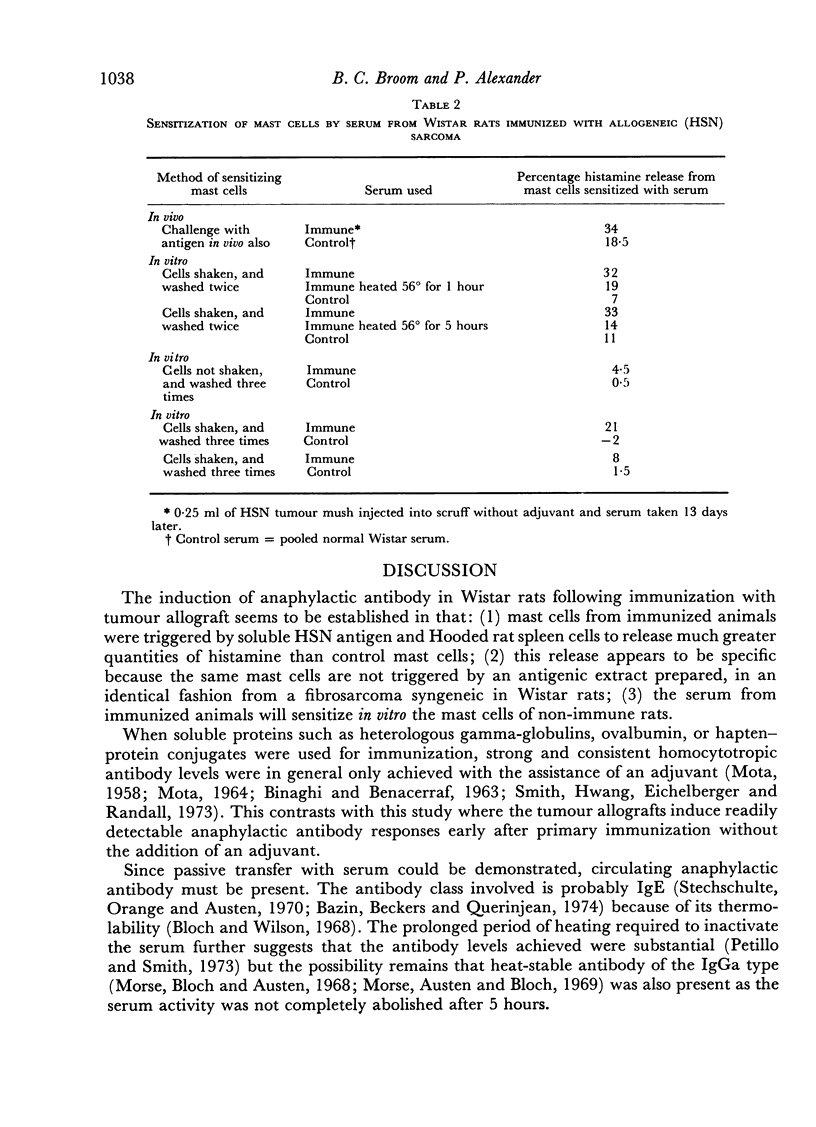
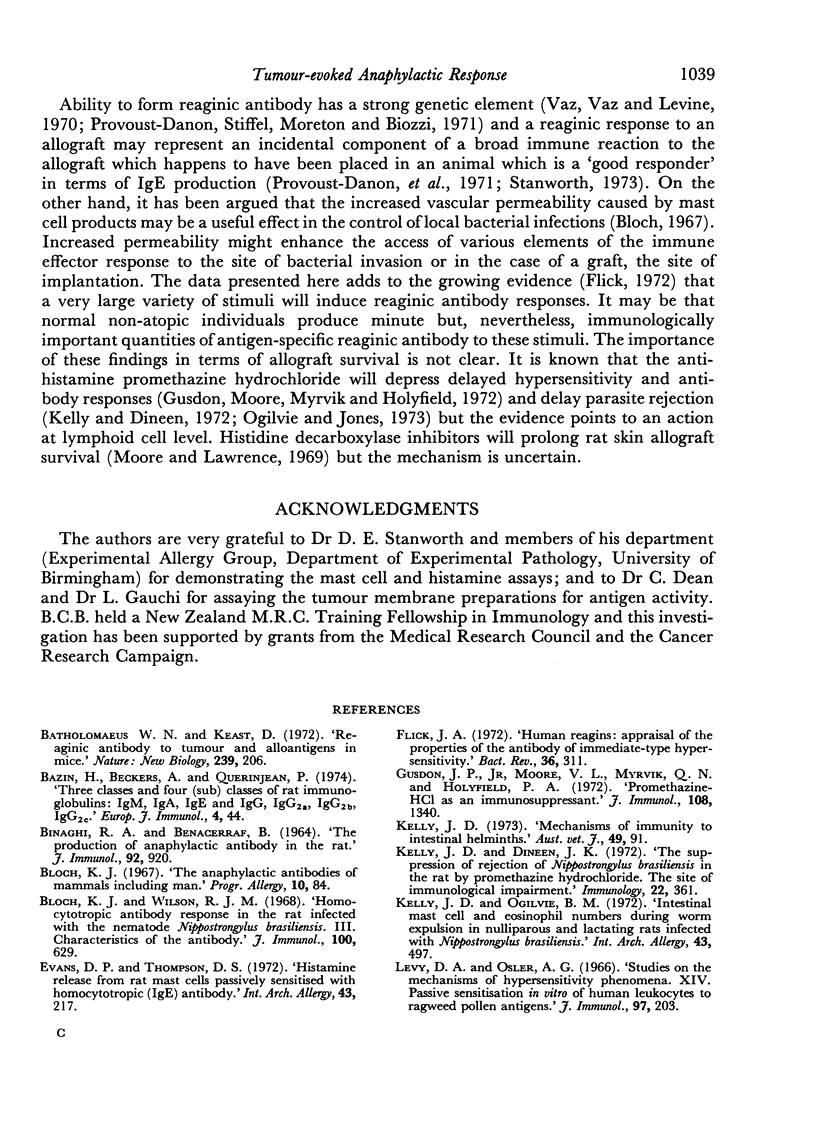
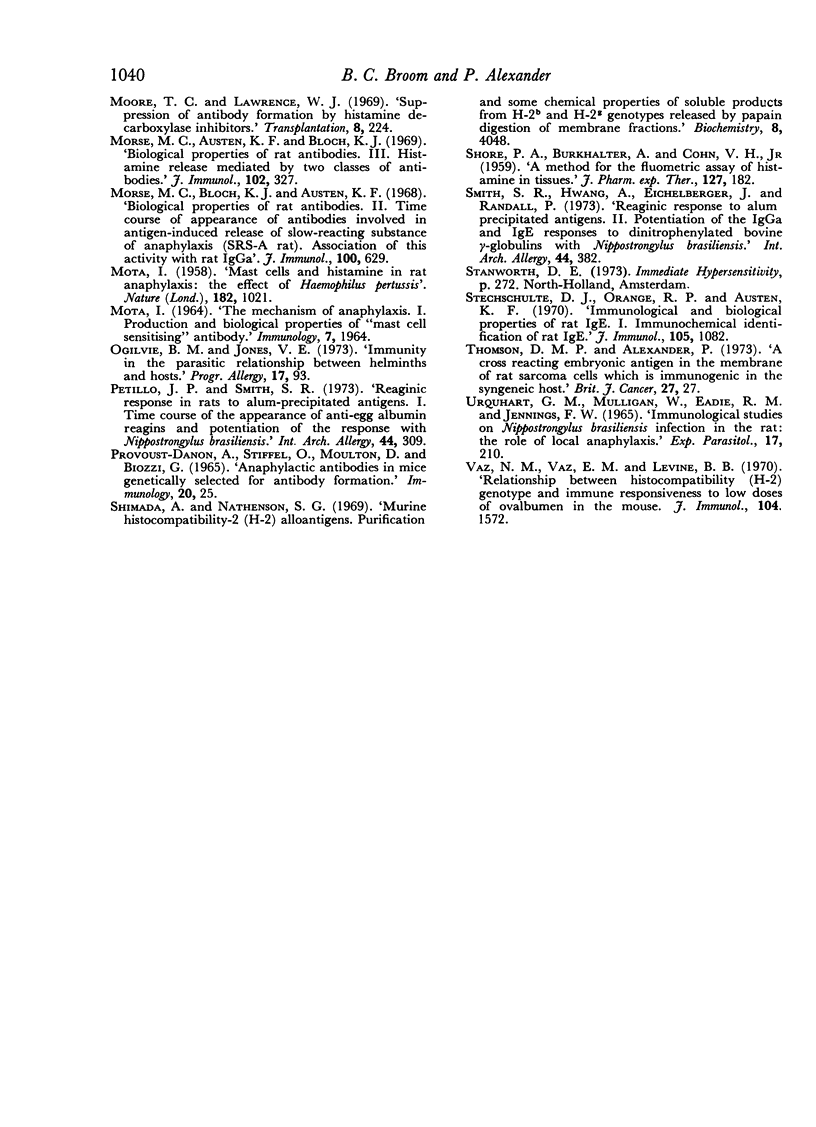
Selected References
These references are in PubMed. This may not be the complete list of references from this article.
- BINAGHI R. A., BENACERRAF B. THE PRODUCTION OF ANAPHYLACTIC ANTIBODY IN THE RAT. J Immunol. 1964 Jun;92:920–926. [PubMed] [Google Scholar]
- Bartholomaeus W. N., Keast D. Reaginic antibody to tumour and alloantigens in mice. Nat New Biol. 1972 Oct 18;239(94):206–207. doi: 10.1038/newbio239206a0. [DOI] [PubMed] [Google Scholar]
- Bazin H., Beckers A., Querinjean P. Three classes and four (sub)classes of rat immunoglobulins: IgM, IgA, IgE and IgG1, IgG2a, IgG2b, IgG2c. Eur J Immunol. 1974 Jan;4(1):44–48. doi: 10.1002/eji.1830040112. [DOI] [PubMed] [Google Scholar]
- Bloch K. J. The anaphylactic antibodies of mammals including man. Prog Allergy. 1967;10:84–150. [PubMed] [Google Scholar]
- Bloch K. J., Wilson R. J. Homocytotropic antibody response in the rat infected with the nematode, Nippostrongylus brasiliensis. 3. Characteristics of the antibody. J Immunol. 1968 Mar;100(3):629–636. [PubMed] [Google Scholar]
- Bloch K. J., Wilson R. J. Homocytotropic antibody response in the rat infected with the nematode, Nippostrongylus brasiliensis. 3. Characteristics of the antibody. J Immunol. 1968 Mar;100(3):629–636. [PubMed] [Google Scholar]
- Evans D. P., Thomson D. S. Histamine release from rat mast cells passively sensitised with homocytotropic (IgE) antibody. Int Arch Allergy Appl Immunol. 1972;43(2):217–231. doi: 10.1159/000230839. [DOI] [PubMed] [Google Scholar]
- Gusdon J. P., Jr, Moore V. L., Myrvik Q. N., Holyfield P. A. Promethazine-HCl as an immunosuppressant. J Immunol. 1972 May;108(5):1340–1344. [PubMed] [Google Scholar]
- Kelly J. D., Dineen J. K. The suppression of rejection of Nippostrongylus brasiliensis in the rat by promethazine hydrochloride. The site of immunological impairment. Immunology. 1972 Mar;22(3):361–370. [PMC free article] [PubMed] [Google Scholar]
- Kelly J. D., Ogilvie B. M. Intestinal mast cell and eosinophil numbers during worm expulsion in nulliparous and lactating rats infected with Nippostrongylus brasiliensis. Int Arch Allergy Appl Immunol. 1972;43(4):497–509. doi: 10.1159/000230865. [DOI] [PubMed] [Google Scholar]
- Levy D. A., Osler A. G. Studies on the mechanisms of hypersensitivity phenomena. XIV. Passive sensitization in vitro of human leukocytes to ragweed pollen antigen. J Immunol. 1966 Aug;97(2):203–212. [PubMed] [Google Scholar]
- Moore T. C., Lawrence W., Jr Suppression of antibody formation by histidine decarboxylase inhibitors. Transplantation. 1969 Sep;8(3):224–234. doi: 10.1097/00007890-196909000-00003. [DOI] [PubMed] [Google Scholar]
- Morse H. C., 3rd, Austen K. F., Bloch K. J. Biologic properties of rat antibodies. 3. Histamine release mediated by two classes of antibodies. J Immunol. 1969 Feb;102(2):327–337. [PubMed] [Google Scholar]
- Ogilvie B. M., Jones V. E. Immunity in the parasitic relationship between helminths and hosts. Prog Allergy. 1973;17:93–144. [PubMed] [Google Scholar]
- Petillo J., Smith S. R. Reaginic response in rats to alum precipitated antigens. I. Time course of appearance of anti-egg albumin reagins and potentiation of the response with Nippostronglus brasiliensis. Int Arch Allergy Appl Immunol. 1973;44(2):309–320. [PubMed] [Google Scholar]
- Prouvost-Danon A., Stiffel C., Mouton D., Biozzi G. Anaphylactic antibodies in mice genetically selected for antibody production. Immunology. 1971 Jan;20(1):25–27. [PMC free article] [PubMed] [Google Scholar]
- SHORE P. A., BURKHALTER A., COHN V. H., Jr A method for the fluorometric assay of histamine in tissues. J Pharmacol Exp Ther. 1959 Nov;127:182–186. [PubMed] [Google Scholar]
- Shimada A., Nathenson S. G. Murine histocompatibility-2 (H-2) alloantigens. Purification and some chemical properties of soluble products from H-2b and H-2d genotypes released by papain digestion of membrane fractions. Biochemistry. 1969 Oct;8(10):4048–4062. doi: 10.1021/bi00838a023. [DOI] [PubMed] [Google Scholar]
- Smith S. R., Hwang A., Eichelberger J., Randell P. Reaginic response in rats to alum precipitated antigens. II. Potentiation of the IgGa and IgE responses to dimitrophenylated bovine -globulin with Nippostrongylus brasiliensis. Int Arch Allergy Appl Immunol. 1973;44(3):382–395. [PubMed] [Google Scholar]
- Stechschulte D. J., Orange R. P., Austen K. F. Immunochemical and biologic properties of rat IgE. I. Immunochemical identification of rat IgE. J Immunol. 1970 Nov;105(5):1082–1086. [PubMed] [Google Scholar]
- Thomson D. M., Steele K., Alexander P. The presence of tumour-specific membrane antigen in the serum of rats with chemically induced sarcomata. Br J Cancer. 1973 Jan;27(1):27–34. doi: 10.1038/bjc.1973.4. [DOI] [PMC free article] [PubMed] [Google Scholar]
- Urquhart G. M., Mulligan W., Eadie R. M., Jennings F. W. Immunological studies on Nippostrongylus brasiliensis infection in the rat: the role of local anaphylaxis. Exp Parasitol. 1965 Oct;17(2):210–217. doi: 10.1016/0014-4894(65)90023-8. [DOI] [PubMed] [Google Scholar]
- Vaz N. M., Vaz E. M., Levine B. B. Relationship between histocompatibility (H-2) genotype and immune responsiveness to low doses of ovalbumin in the mouse. J Immunol. 1970 Jun;104(6):1572–1574. [PubMed] [Google Scholar]


